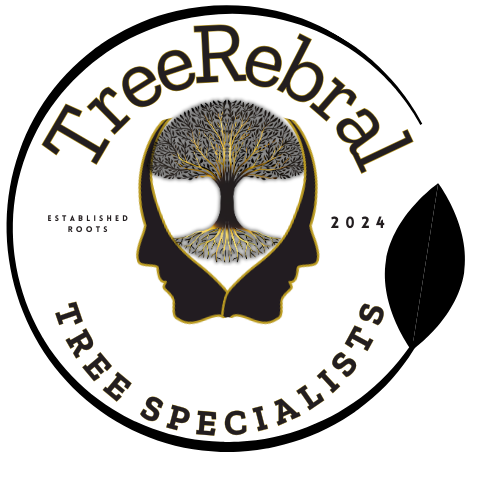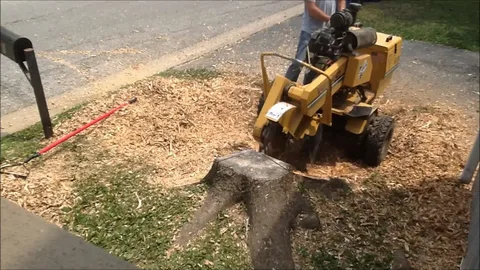So, you’ve had a tree removed, and the stump is now gone thanks to stump grinding? Now you’re wondering: can you replant a tree in the same spot? It’s a common question for homeowners, and the answer is nuanced. While technically possible, planting a new tree where an old tree once stood requires careful consideration and specific steps to ensure success. Let’s delve into the factors at play when considering trees after stump grinding.
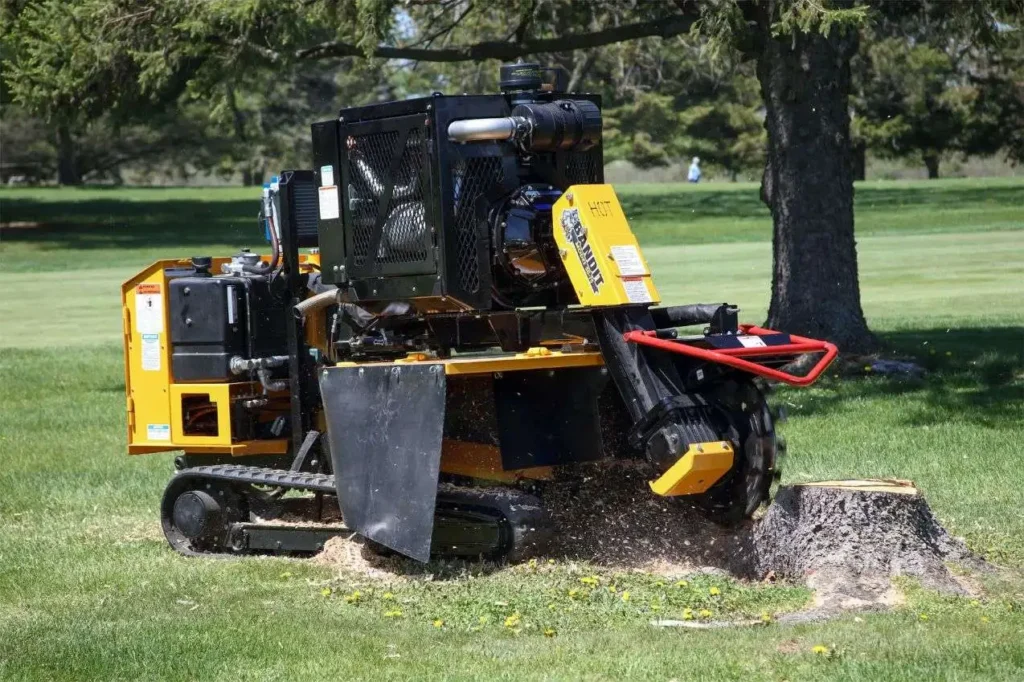
Understanding the Challenges of Replanting in the Same Spot
Replanting in the same spot after stump grinding presents several challenges. The old root system of the previous tree can leave behind a depleted soil lacking essential nutrients. Additionally, remaining roots can hinder a new tree’s roots, and potential fungal growth or disease from the old tree can affect the new planting. Proper soil preparation is critical for new growth for the newly planted tree.
Key Considerations Before You Replant
Before you rush to plant new, assess the conditions left behind by the stump removal service. Consider factors like soil quality, potential disease, and the type of tree that was removed. Stump grinding Bournemouth services may offer advice. Evaluate the existing soil to help ensure the new tree’s health and viability. Proper assessment helps mitigate potential setbacks in the planting process.
Soil Depletion
The old tree consumed substantial nutrients from the soil. The decomposition of the old stump robs nitrogen as the wood chips and remaining roots break down. This can leave the soil deficient, hindering the root growth of new trees. Replenishing nutrients is essential for successful tree planting. Soil testing is highly recommended before planting to determine deficiencies and amend accordingly before you plant a new tree.
Root Remnants and Compaction
Even after stump grinding, sizable root remnants can remain, impeding the new tree’s root growth. Soil compaction from the stump grinder also presents a challenge. These remnants not only physically obstruct planting but can also influence the drainage and aeration of the soil. Consider further soil loosening or stump removal to encourage root growth.
Fungal Growth and Disease Risks
The old stump may have harbored fungal diseases that can persist in the soil, potentially infecting the newly planted tree species. This is particularly true if the previous tree suffered from a known soilborne disease. Taking preventative measures is key. Soil sterilization or choosing disease-resistant tree species are options before you replant a tree.
Soil Structure and Drainage Issues
Stump grinding can disrupt the natural soil structure, leading to drainage problems. The process may create uneven soil density, affecting how water permeates the ground. Poor drainage can suffocate a new tree’s roots, leading to stunted new growth. Improving soil structure with compost promotes healthy drainage. Ensuring the tree’s roots are well drained will encourage new growth.
Timing and Aftercare
The timing of planting trees after stump grinding is crucial. Avoid planting too soon after stump grinding to allow for decomposition and soil amendment. Adequate tree care is essential, including proper watering and fertilization. Closely monitor the newly planted tree for signs of stress or disease. This will help to make sure new growth can occur.
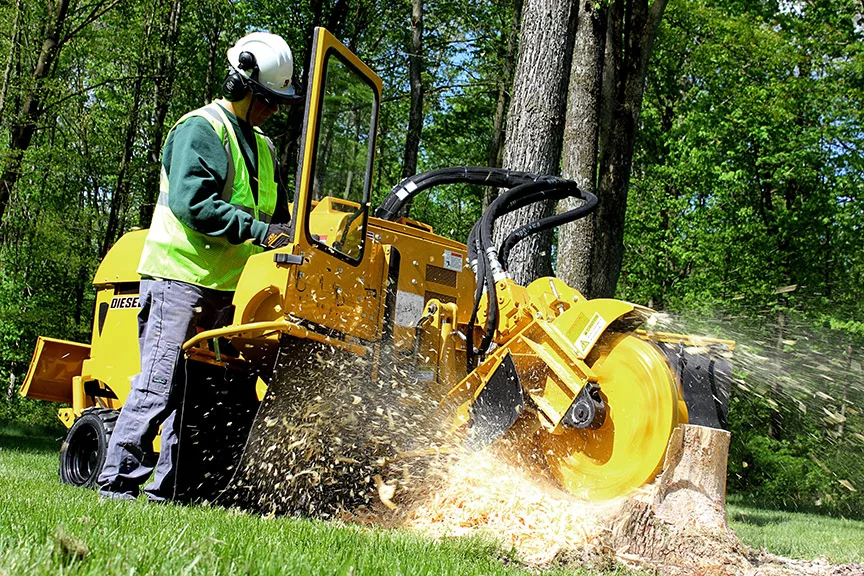
Steps to Successfully Replant in the Same Spot
If you’re determined to replant a tree in the same spot, careful preparation is key. Follow these steps to maximize your chances of success.
1. Remove Excess Wood Chips and Debris
Thoroughly remove the wood chips and debris left from the stump grinding. While some decomposition is beneficial, too many wood chips can inhibit planting. Aim to clear the area where you intend to plant the new tree, ensuring a clean slate for a new tree’s roots to establish themselves. Removing the removed stump debris will increase your success.
2. Improve Soil Quality
Amend the soil with compost and other organic matter to replenish lost nutrients and improve soil structure. Consider a soil test to identify specific deficiencies and address them accordingly. Proper soil preparation lays the foundation for healthy root growth and new growth. This will help you plant new.
3. Choose a Smaller or Different Tree Species
Opt for a young tree species that is smaller than the old tree and well-suited to the soil conditions. A different type of tree may be more resilient to any remaining soilborne diseases. Research compatible tree species for optimal tree planting success. This helps to make sure new growth can occur.
4. Adjust the Planting Position
If possible, slightly adjust the planting position to avoid the exact location of the old stump. Even moving a few feet away from the old root system can make a significant difference. This allows the new tree’s roots to access undisturbed soil and nutrients. Shifting only a few feet away from the stump can help.
5. Monitor for Pests and Disease
Closely monitor the newly planted tree for signs of pests or disease. Early detection and treatment are crucial to preventing serious problems. Regular tree care, including appropriate watering and fertilization, supports the new tree’s health and resilience. Keep an eye out for pests.
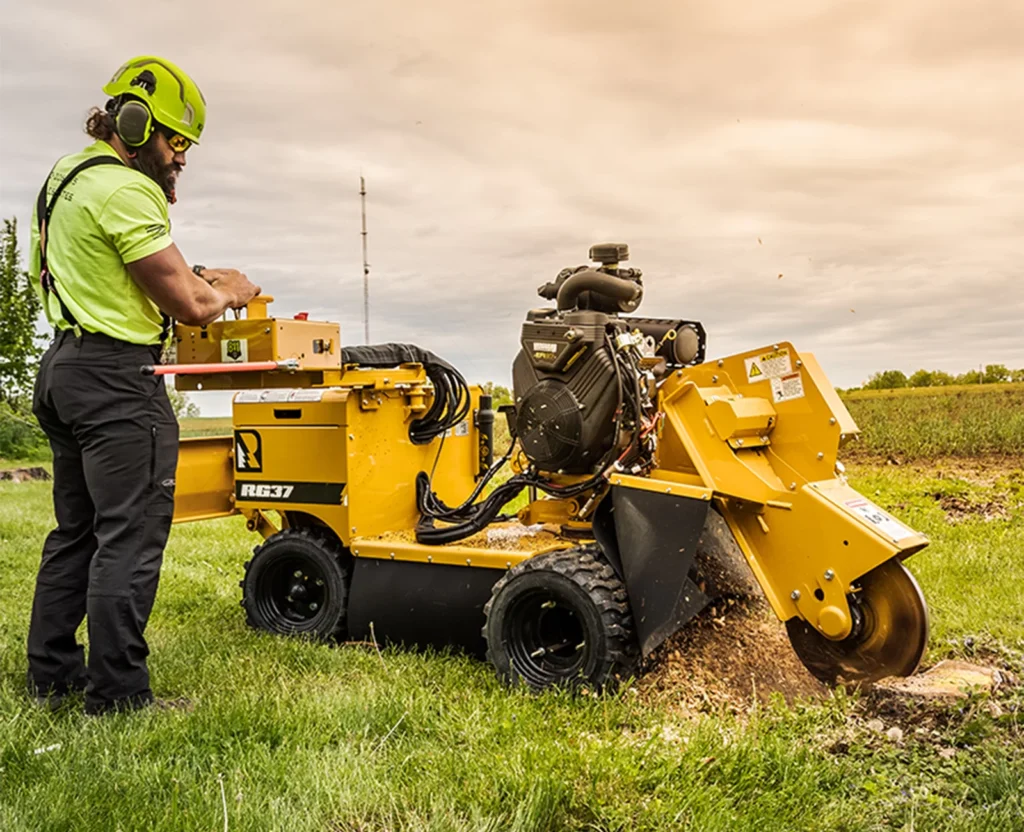
Alternatives to Planting in the Same Spot
If you’re hesitant about planting in the exact location after stump grinding, consider alternative locations nearby. Creating a flower bed or a small garden around the area can be an excellent option. This approach allows you to enhance the aesthetic appeal of your yard without the immediate concerns of soil depletion or disease from the previous tree. This helps you plant new, even if it isn’t a new tree at the same spot.
Professional Stump Grinding Services in Bournemouth and Poole
For those in the Bournemouth and Poole areas, Tree Rebral offer comprehensive solutions to prepare your landscape for new planting. These services not only efficiently grind the stump but also provide guidance on soil remediation and tree species selection. By using a tree stump grinding, you can ensure that your tree planting efforts are supported by expert knowledge and industry-leading practices.
Frequently Asked Questions (FAQs)
Many homeowners have questions about replanting after stump grinding. This section addresses common concerns and provides concise answers to guide your decision-making process. We aim to provide a clear understanding of the considerations involved in planting new trees in areas where old trees once stood. Here are some common questions about planting trees after stump grinding.
How long after stump grinding can you plant?
Ideally, wait several weeks or even months after stump grinding before attempting to plant a new tree. This allows time for the remaining wood chips and small root systems to decompose, reducing nitrogen depletion in the soil. Amending the soil with compost during this period can further improve conditions for new growth. Waiting to plant the new tree is advisable.
Will trees grow back after stump grinding?
When stump grinding is performed correctly, the likelihood of the old tree growing back is minimal. The process removes the stump and a significant portion of the root system, preventing regrowth. However, in some cases, small shoots may appear, requiring further treatment or removal to ensure complete eradication. Proper stump removal is key to preventing regrowth. uses stump grinding service 3 times to make sure no stump remains and the tree will not grow back.
How soon can you plant a tree after stump grinding
While some sources might suggest planting immediately, waiting at least a few weeks after stump grinding is advisable. This allows the wood chips to begin to decompose, although a longer waiting period, combined with soil amendment, offers the best conditions for a new tree’s root growth. Soil preparation and timing are crucial. Do not plant new soon after stump grinding, it’s very important for new growth for the tree.
Can You Replant a Tree After Stump Grinding
The possibility to replant a tree depends greatly on the preparation following the stump grinding. If you want to plant a new tree exactly where the old tree stood, make sure you remove as many wood chips as possible and enrich the soil with compost. The old root system’s decomposition can deplete nutrients, so replenish these before planting trees. Consulting a stump removal service can provide tailored tips after stump grinding to ensure successful tree planting and promoting healthy new growth for the new tree’s roots.
How Soon Can You Plant After Stump Grinding
Patience is key when considering how soon after stump grinding can you plant. Allow at least a few weeks, ideally several months, for the wood chips to decompose. During this period, regularly amend the soil with compost to replenish nutrients and improve soil structure. Rushing to plant a new tree can lead to poor root growth and hinder the new tree’s overall health. Ensure the soil is adequately prepared before planting the new tree. Waiting ensures a better start for the newly planted tree.
Are Stump Grindings Good for Soil?
While stump grindings, or wood chips, can eventually decompose and add organic matter to the soil, they initially deplete nitrogen as they break down. This can temporarily inhibit new growth. Therefore, it’s essential to balance the benefits by amending the soil with nitrogen-rich compost or fertilizer. Proper soil preparation will ensure that you can plant new trees successfully. Too many wood chips can be detrimental if not balanced with other nutrients.
When Is The Best Time To Transplant Trees? (Pine, Oak & Maple)
The optimal time to transplant trees like pine, oak, and maple is during their dormant season, typically late fall or early spring. This minimizes stress on the tree and allows it to establish its root system before the active growing season. When considering planting trees after stump grinding, align the planting with these optimal transplanting seasons. Proper timing enhances the chances of successful new growth after the stump removal is complete so that you can plant new.
Will Stump Grinding Damage My Property?
Stump grinding typically does not damage property if performed by a professional service. However, it can create wood chips and disturb the immediate area around the stump. A reputable stump removal service will take precautions to protect surrounding landscapes and structures. They’ll also clean up debris after the grind, leaving your property tidy and ready for new planting. Enlisting a reputable tree stump grinding service will help mitigate the risks of property damage.
How Soon After Stump Grinding Can You Plant?
Although some might be eager to plant new soon after stump grinding, patience is crucial. It’s generally recommended to wait several weeks to a few months before planting trees. This waiting period allows the wood chips to begin to decompose, reducing nitrogen depletion in the soil. Amending the soil with compost during this time enhances root growth conditions. A well-prepared soil environment ensures better success when you replant a tree in the area.
Conclusion
Replanting after stump grinding is achievable with careful preparation and consideration. By removing excess wood chips, amending the soil with compost, choosing appropriate tree species, and monitoring for pests and disease, you can successfully plant a new tree in the same spot. Consulting with Tree Rebral can provide valuable guidance and ensure optimal conditions for new growth and to plant new trees. Related Blog
